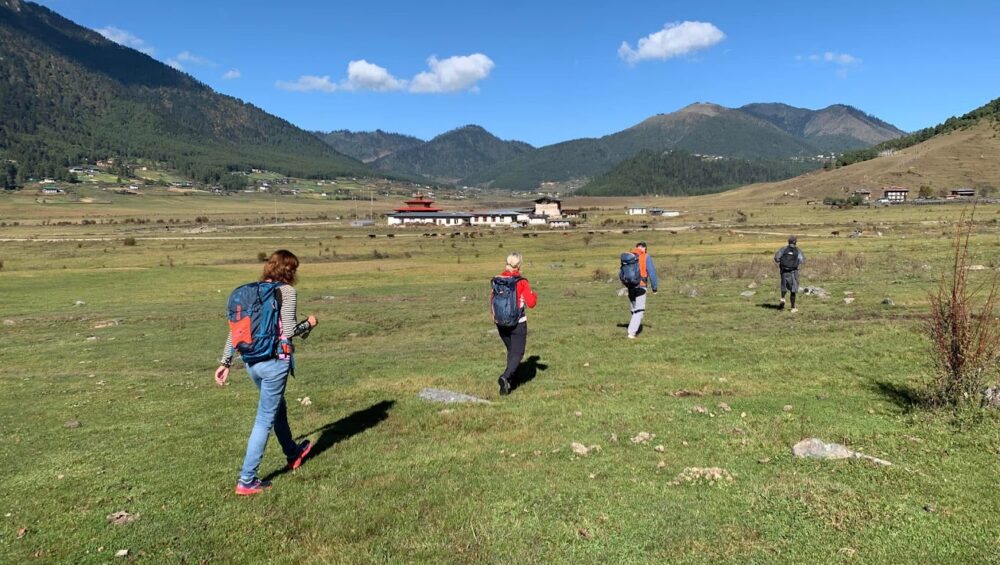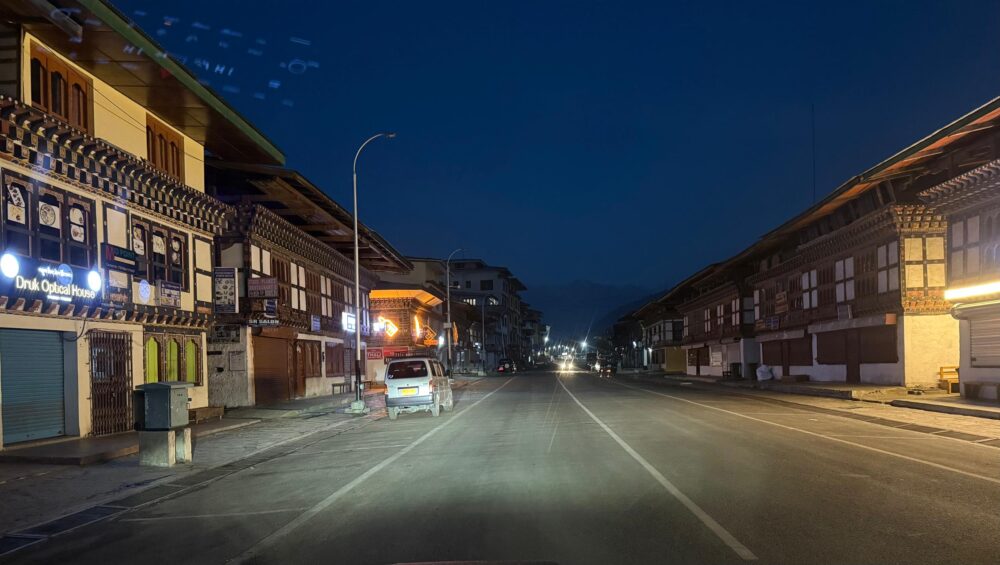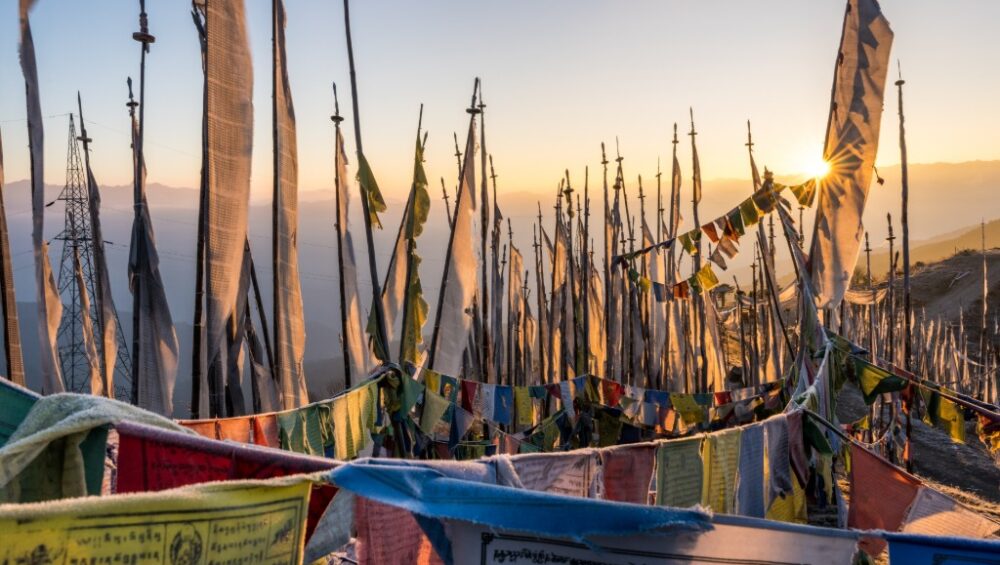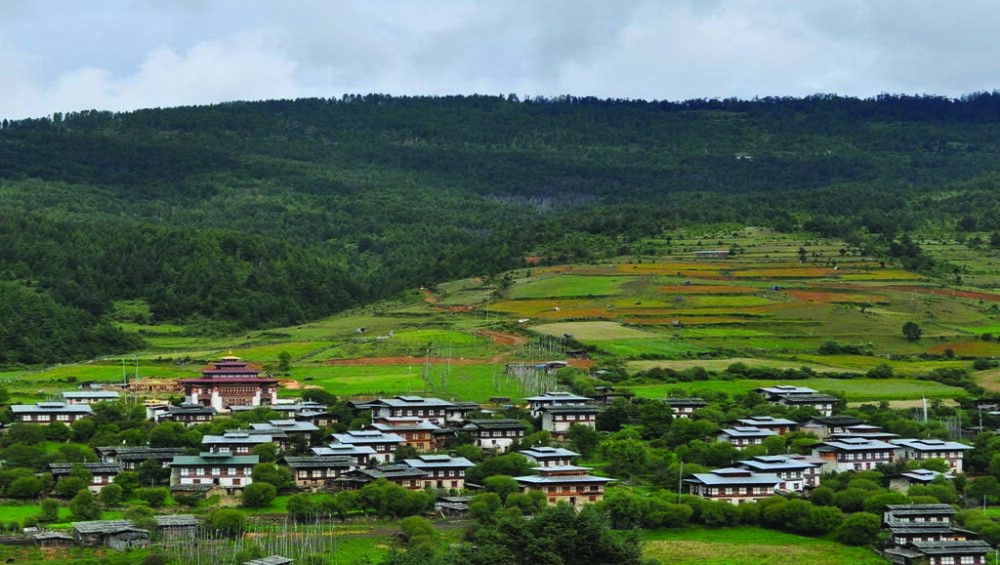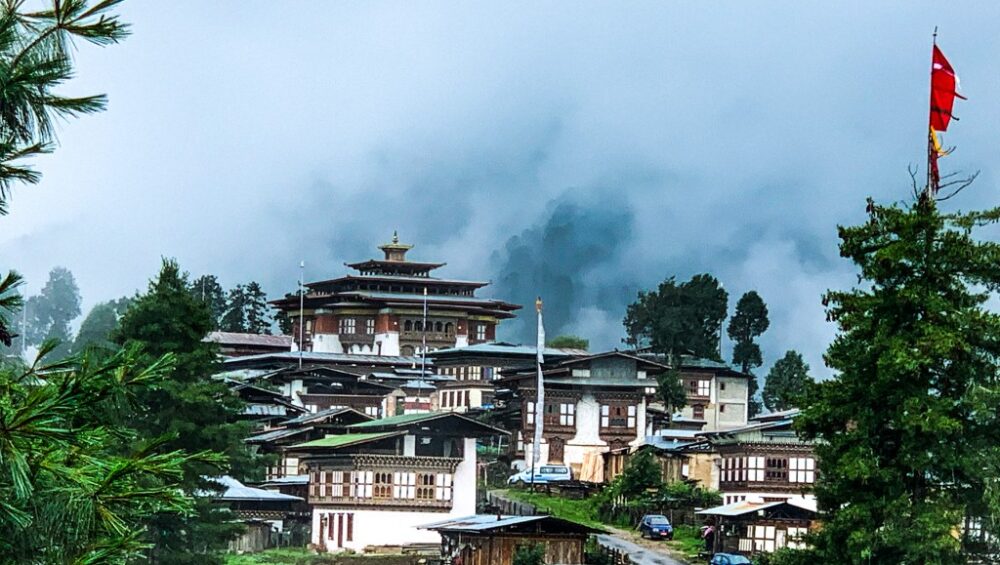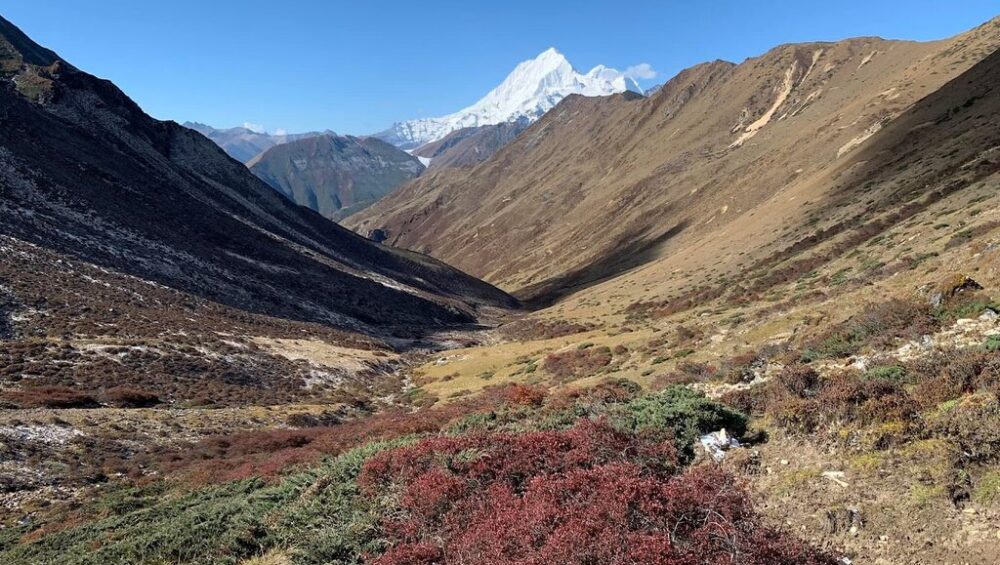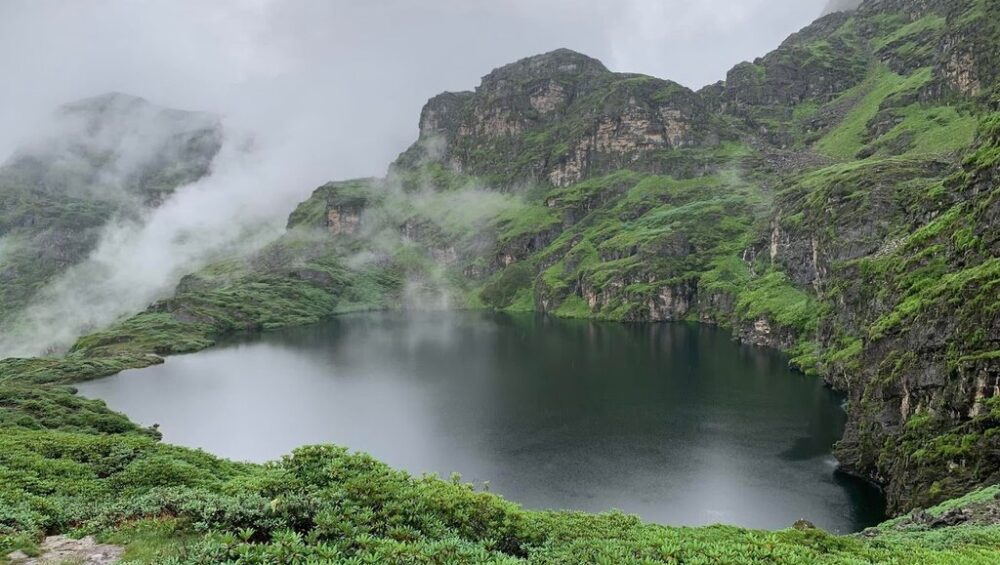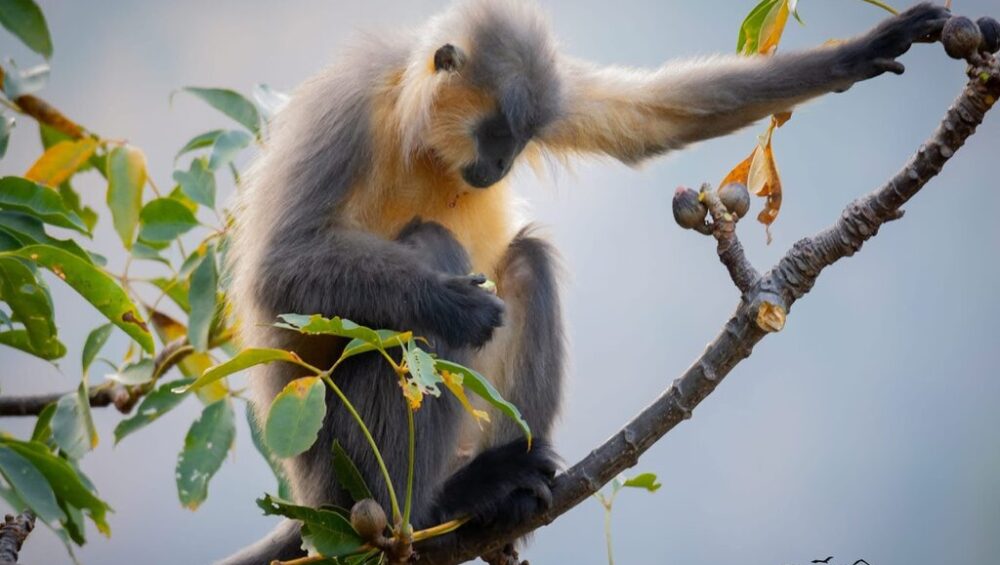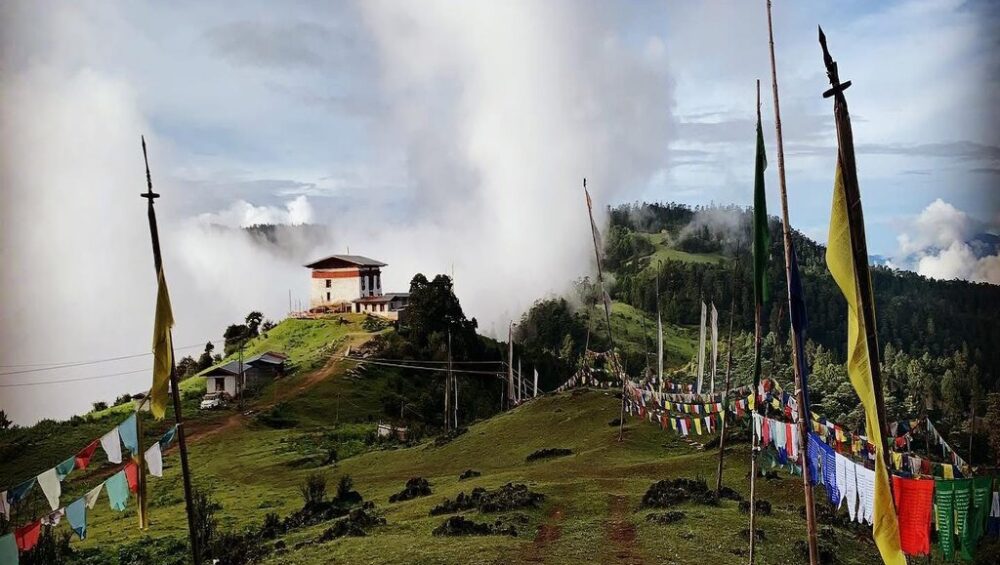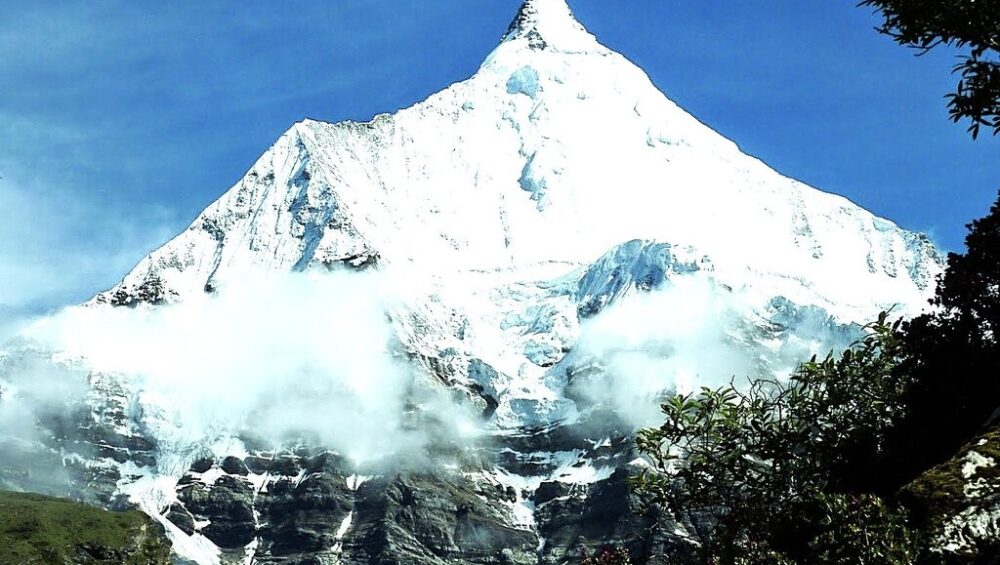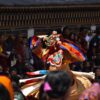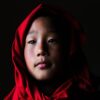The Nabji Trail is a perfect post-harvest or winter trekking route, open from October to March. This six-day, low-altitude trek (693m/2,274ft to 1,636m/5,367ft) is set in the ecologically rich Jigme Singye Wangchuck National Park in central Bhutan. The park is not only home to diverse wildlife but also several culturally vibrant agricultural villages.
The trail begins at Riotala (1,060m/3,478ft) and ends at Tongtongphey (1,061m/3,481ft), two small villages located along the Trongsa-Zhemgang Road, in the buffer zone on the eastern side of the Mangde Chhu River. Trekkers may encounter the endangered Golden Langur, a rare primate found only in Bhutan and Assam, as well as the Rufous-necked Hornbill. The trail is also a paradise for bird enthusiasts, with sightings of species such as serpent eagles, golden-throated barbets, and yellow-bellied flowerpeckers, alongside more common birds like mynas and blue-fronted redstarts. The region’s flora includes Chir Pine, bamboo, rhododendrons, and wild orchids.
Beyond its natural beauty, the trail is steeped in history. A highlight is the Nabji Temple, which houses a commemorative pillar marking the peace treaty brokered in the 8th century by Guru Rinpoche between King Nauche of India and King Sindu of Bhutan. Evidence of Guru Rinpoche’s presence can be found at various points along the trek.
The final two days of the trek pass through the homeland of the Monpa people, believed to be Bhutan’s earliest settlers. Their traditional villages are scattered across slopes overlooking the Mangde Chhu River, in one of Bhutan’s earliest settlement regions. The Monpas practice a mix of animistic shamanism and Buddhism and are skilled in cane weaving and bamboo crafting, which they use to build homes and create baskets and household items. The term “Monpa” means “people of darkness,” reflecting their historical isolation before the advent of Buddhism in Bhutan
The Nabji Trail plays a key role in supporting park management by raising awareness of environmental and cultural conservation through tourism programs. It also provides socio-economic benefits to local communities while minimizing the negative impacts of tourism. Specific measures have been implemented to ensure tourism supports livelihoods in the area and promotes awareness of natural, environmental, and cultural issues.
This trail has long been used by villagers for commuting between villages. To protect the environment, a waste management system requires tour groups to carry all non-degradable waste out of the park. Waste can be disposed of at an incinerator located at the Park Range Office in Tongtongfey, which serves both tour groups and the local community.
The trail is designed for local communities to manage and provide services independently. These services include community camping sites with basic facilities at Nimshong, Korphu, Kubdra, and Jangbi, or bucket showers and hot stone baths at Nabji. Meals, tea, and other services are also offered. Prices for these services are standardized to avoid misunderstandings between communities, tour operators, and visitors. Each village has a Tourism Management Committee (TMC) appointed by villagers, which oversees services, collects revenue, and manages funds through a Community Development Fund (CDF). Revenue is deposited into a CDF bank account for the community’s benefit.
Income opportunities are shared among villagers on a rotation basis. Community members earn by acting as porters, guides, or cooks, and by selling crafts, vegetables, and agricultural products. Cultural performances are another source of income. A portion of the earnings from these activities is deposited into the CDF, which is used for village development, educational support for children, and maintenance or expansion of tourism facilities. The fund also supports projects that benefit individuals not directly involved in tourism, such as children and the elderly.
Service Rates:
The standard rates for the basic service package and optional services will be shared soon. Revenues from specific services will go directly into the Community Development Fund (CDF). For other services, a percentage of the revenue will go into the CDF, while the rest stays with the local service provider.

